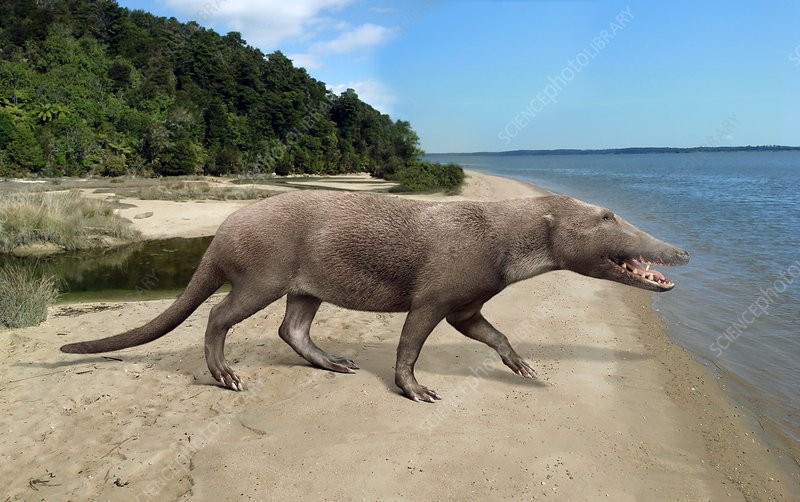Islamabad, April 01: Whales, the ocean’s largest creatures, were once land-dwelling animals that walked on four legs.
Around 50 million years ago, their ancestors roamed the shores before gradually evolving into the marine giants we recognize today.
One of the earliest cetaceans, Pakicetus, was a goat-sized animal that lived along the shores of lakes and rivers in what is now Pakistan.
Despite its appearance, which was far from resembling a whale, Pakicetus possessed unique traits for aquatic life, including the ability to hear underwater.
As time passed, the descendants of Pakicetus continued to adapt to their changing environment, giving rise to Ambulocetus around 50 to 48 million years ago.
Ambulocetus was a semi-aquatic animal with large, flipper-like feet and a tail suited for swimming, allowing it to thrive both on land and in water.
Further evolution led to the emergence of Dorudon between 40 and 33 million years ago.
Dorudon was a fully aquatic creature, about five meters long, with flippers and tiny hind legs, entirely adapted to life in the water. It even gave birth underwater, marking a significant step in cetacean evolution.
In just 10 million years, cetaceans had fully adapted to aquatic life, transitioning from land to sea in one of the fastest evolutionary changes recorded in history.
Some of these evolving creatures, including baleen whales, developed flatter skulls and filtering systems in their mouths, as seen in species like blue whales and humpback whales.
Others, such as dolphins, orcas, and sperm whales, retained their teeth.
This incredible journey from land to sea is a testament to the power of evolutionary change and the adaptability of life on Earth.









